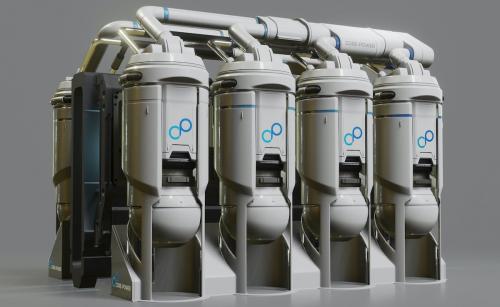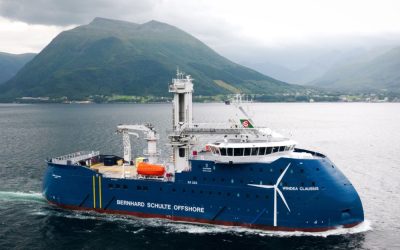Nuclear-powered ships aren’t entirely uncommon and over the years their number has probably exceeded that of all the LNG-fuelled ships ever built. However, with few exceptions all of the vessels have been military ships and in the main submarines.
In the commercial sector – if the Russian-owned nuclear icebreakers are excluded from the count – only four nuclear merchant ships have been built. They were not exactly successful and Russian-owned Sevmorput is the only one still in service. That ship’s survival is an interesting story as it was planned to be scrapped on more than one occasion and was also expected to be turned into a drill ship for Arctic oil exploration, before being recommissioned in 2016 to carry mainly military cargoes on the Northern Sea Route (which, coincidentally, is the meaning of its Russian name).
Today, nuclear ships are once again being talked about as a possibility but now the driving factor is decarbonisation. The subject of nuclear merchant ships resurfaced late last year in a project involving UK-based Core Power and US company Terrapower to develop a molten salt reactor (MSR) suitable for shipboard power production. The attention it drew was due in a great part to Terrapower being linked with former Microsoft head Bill Gates.
But it’s not the first occasion that the idea has received publicity. In 2010, Lloyd’s Register began formulating new rules for nuclear powered ships, saying it had received some approaches for development of nuclear vessels from various interested parties. If nuclear ships are to become reality, the MSR looks to be the best choice for a power source. It has many advantages and is considered safer and compact enough to power most vessels using a single reactor. Larger and faster ships and those with a great power demand, such as cruise ships and ULCVs, would need multiple units.
Ultimately, all nuclear reactors are nothing more than a source of heat, which is used to produce steam by means of heat exchangers to drive a turbine that in turn produces electricity. MSRs – of which there are numerous variations – were first developed in the 1950s and intended as the propulsion system of a nuclear-powered bomber. They employ nuclear fission but under conditions that are very different from the types of pressurised reactors that have caused disasters such as Chernobyl or Fukushima.
According to a 1999 academic paper authored by Furukawa et al titled ‘Thorium fuel utilisation: Options and trends. Proceedings of three IAEA meetings held in Vienna in 1997, 1998 and 1999’, the safety of MSRs is due to many factors; they operate at pressures lower than 5 Bar (reducing risk of failure), the fuel and coolant salts are chemically inert, and the boiling point of fuel salt is about 1,670K or more, much higher than the operation temperature 973K. Therefore, the pressure of primary system cannot increase.
As well as the Terrapower/Core Power project, other research is under way for ship power. South Korean shipbuilder Samsung Heavy Industries (SHI) has partnered with Korea Atomic Energy Research Institute (KAERI) with an aim to develop MSR nuclear-powered vessels and DNV is exploring nuclear fusion as a source of power. It is anticipated that the first prototype MSR will be trialled in around four years’ time.
Core Power foresees that its MSRs will change ship designs and methods of operating ships. Assuming opposition to their use can be overcome, a nuclear-powered ship has several operational attractions. Unlike the previous generations of nuclear merchant and naval vessels, with an MSR there will be no need to refuel. The ship will be delivered with sufficient fuel to allow for a lifetime of normal service.
Thus, the ship will be immune to fluctuations in fuel costs – a factor that has caused great pain for ship operators over the years. Furthermore, there will be no requirement to slow steam beyond shortage of cargoes and indeed ships could be built to travel at much faster speeds than is common. This could mean that less ships and crew will be needed to match the carrying capacity of today’s world fleet.
Building nuclear-powered ships would mean that in some cases new ships designs will be developed free of some of the limitations that exist today as regards bunker capacity and location and with less need for energy saving devices and pollution abatement equipment. There would be no need to plan voyages and cargo intake based on bunkering prices and opportunities. Ships’ ranges would be increased and limited only by the need for provisions and fresh water for crew use. In times of low demand, laying up ships could be avoided as the vessel could sail aimlessly in circles without wasting fuel.
This would ensure that fouling does not accumulate and prevent transfer of species. Of course, all of the above could be accomplished with zero emission of CO2, SOx, NOx or particulate matter. The risk of pollution from bunker spills would also be eliminated.




